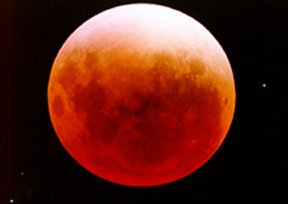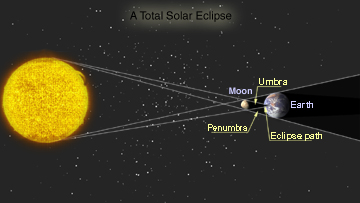Click on image for full size
Courtesy of Andy Steere
Lunar Eclipse January 20, 2000
News story originally written on January 17, 2000
The last lunar eclipse of the millennium in North America (or the first of the new millennium, if you prefer)is this week! On January 20, 2000, which is Thursday for those living in North America, a total lunar eclipse will occur.
A lunar eclipse is different from a solar eclipse. During a solar eclipse, the Moon passes between the Earth and the Sun. During a lunar eclipse, the Earth's shadow blocks the Sun from the Moon. There's another important difference. You need to protect your eyes while viewing a solar eclipse, but the only requirement to watch a lunar eclipse is getting off your couch and stepping outside.
The lunar eclipse will start near 10:00 pm ET, when Earth's shadow first touches the Moon. It ends at 1:25 ET and the Moon is completely covered from 11:05 to 12:22 am ET. During the complete cover, a reddish glow will surround the Moon. This is because the Earth's atmosphere scatters blue light. The red part of the spectrum makes it to the Moon and is reflected back, giving it a reddish tint.
So, why not take a break from television to witness a very unusual event. Lunar eclipses are especially neat because you don't need to be in the middle of nowhere to see it. Even if you live in the city, you can observe the eclipse from your porch or balcony!















